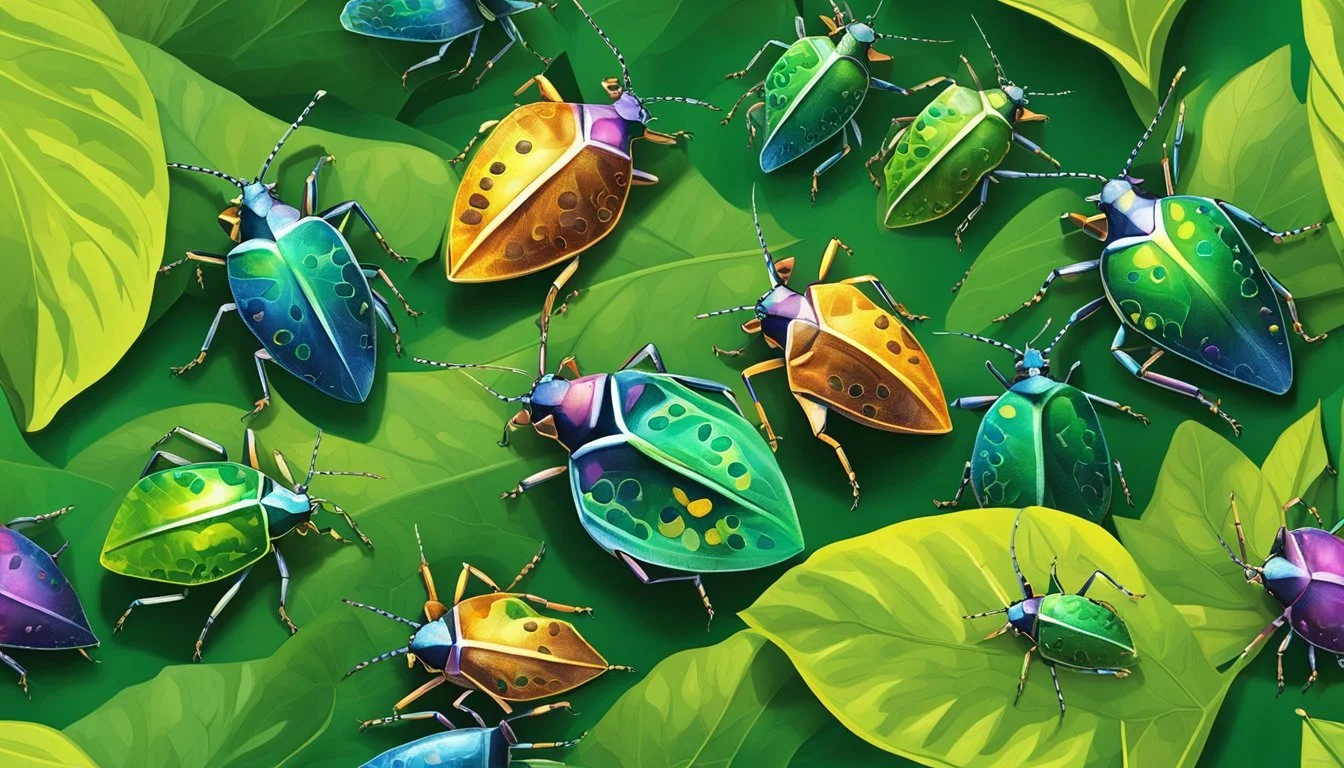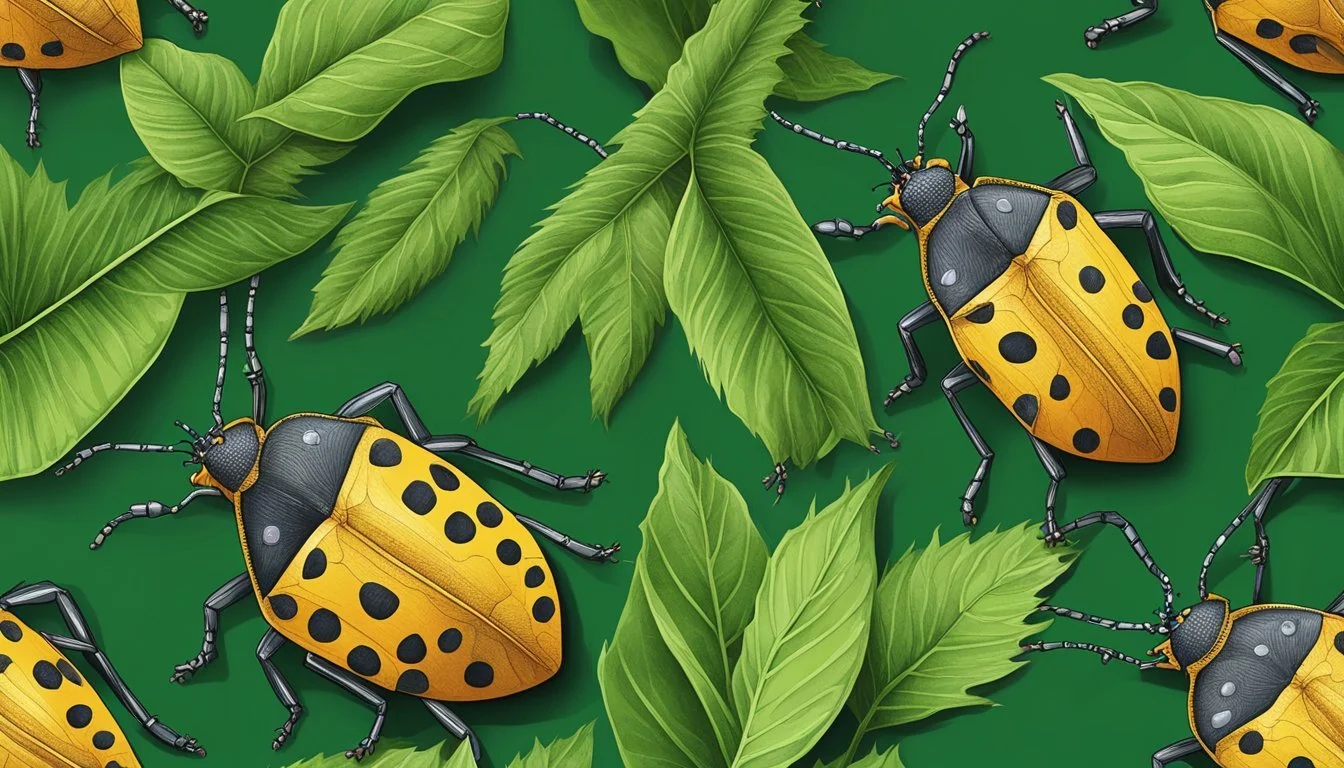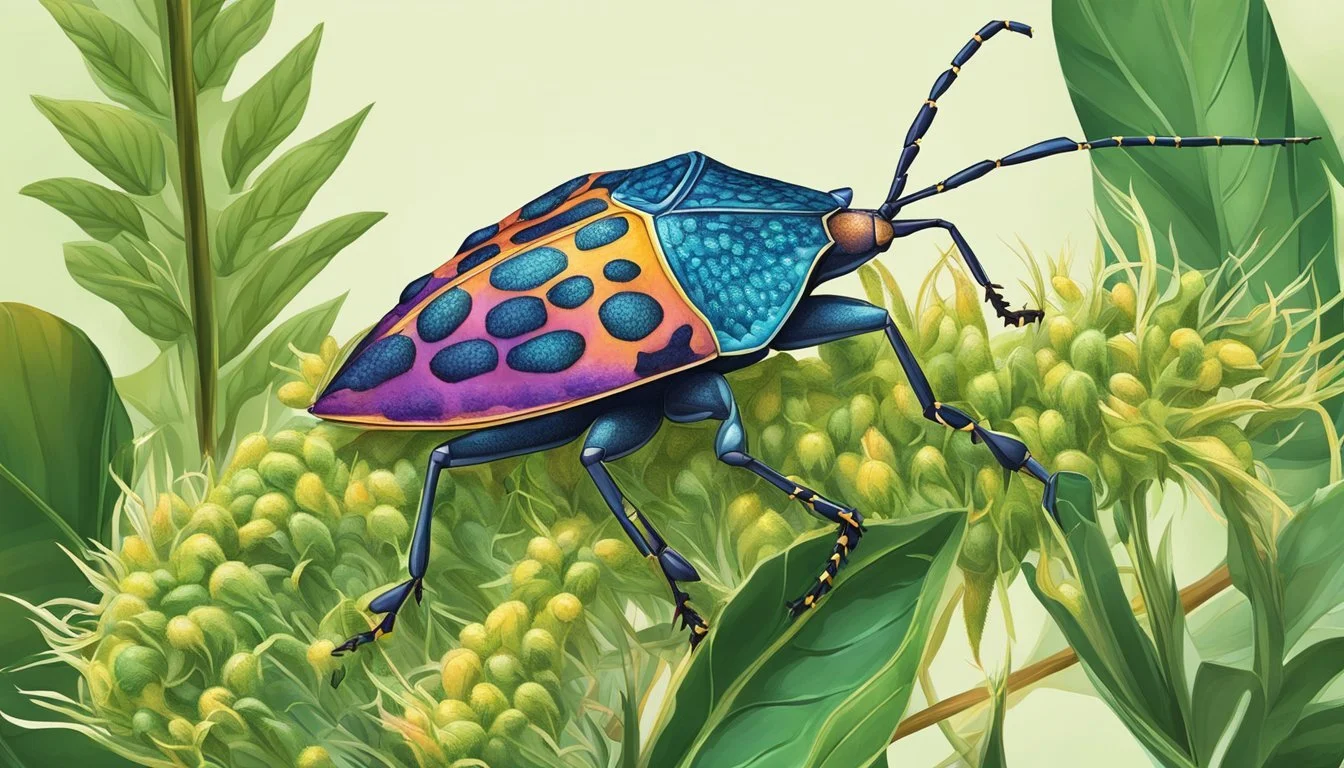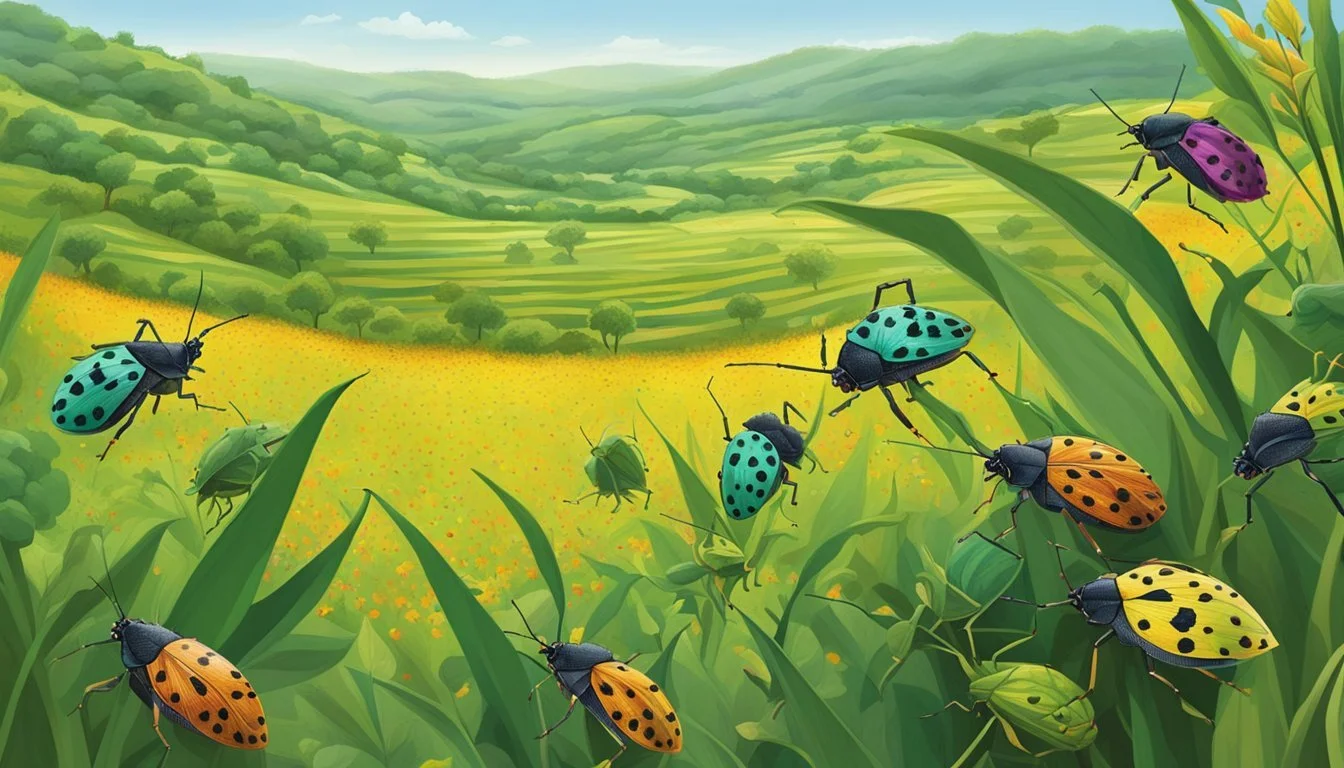Stink Bugs An African Insect Ingredient Elevating Culinary Experiences
Stink bugs, a term that often evokes a sense of nuisance and displeasure, might not be the first thing that comes to mind when thinking of flavorful ingredients. However, across Africa, a particular variety known as the edible stink bug is prized not only for its unique taste but also for its nutritional value. Contrary to their notorious reputation primarily as pests, these shield-shaped insects are integral to local cuisines and are consumed for both their flavor and health benefits.
In various parts of Africa, the edible stink bug is a traditional delicacy that adds a distinct flavor to dishes. These light green-yellow bugs are harvested and prepared in a manner that highlights their taste, which is often described as reminiscent of apples or pears. Rich in protein, fat, and essential amino acids, the edible stink bug stands out as a sustainable food source, aligning well with contemporary pursuits of alternative and environmentally friendly proteins.
Understanding Stink Bugs
Stink bugs, having garnered attention due to their pungent defense mechanism and increasing presence in various environments, present an intriguing aspect of both nuisance and nutritional value in certain cultures.
Species and Identification
Stink bugs belong to the family Pentatomidae, which contains many species with considerable variability in appearance. Among the myriad of species, the Brown Marmorated Stink Bug (Halyomorpha halys) is perhaps the most recognizable, especially in regions like North America where it is considered an invasive species. Originating from Asia, with strong ties to countries like China, this particular species is known for its typical shield-like shape and mottled brown coloration.
Physical Characteristics
The body shape of stink bugs is easily distinguished by its shield-like form, measuring approximately 17mm in length for common varieties like the Brown Marmorated Stink Bug. This species also features antennae with white bands and can display a range of colors, from brown to greenish hues. The physical makeup of these insects serves both as a means of identification and camouflage in their natural habitat.
Behavior and Habitat
Stink bugs are typically found in warm environments, often infiltrating gardens, houses, and crops. During fall, as temperatures drop, they seek warmth and are known to enter homes to overwinter, clustering around windows and doors. As for their infamous odor, it is a chemical defense released from glands located on their abdomen to deter predators such as birds, ants, and other insectivorous animals.
Stink Bugs in the Ecosystem
Despite their reputation as a pest, stink bugs play a role in the ecosystem. They serve as prey for various natural predators, including the spined soldier bug, assassin bugs, and seed bugs. In their native Asian environments, and to a lesser extent in North America, these insects are part of a complex web of ecological interactions that affect both garden environments and agricultural practices.
Stink Bug Interactions with Agriculture
Stink bugs pose a significant threat to agriculture, affecting a variety of crops. Effective management strategies are necessary to mitigate their impact and utilize their potential in culinary practices.
Impact on Crops
Stink bugs are recognized as a major agricultural pest, causing economic losses to crops such as soybeans, corn, beans, vegetables, and tomatoes. They feed by piercing plant tissues and sucking the sap, leading to deformed and blemished fruits that are unmarketable.
Prevention and Control Methods
For homeowners and gardeners, prevention of stink bug infestation includes sealing entry points with caulk and employing natural repellents like mint and diatomaceous earth. Agriculturalists use pheromone traps to monitor stink bug populations and sprays when necessary.
Pest Management Strategies
Effective management in agriculture relies on an integrated approach, combining chemical insecticides with cultural practices such as crop rotation. The use of pheromone-aided traps helps reduce reliance on insecticides by targeting specific stink bug species.
Natural Predation and Biological Control
Biological control is a key strategy, with natural predators like the spined soldier bug and assassin bugs playing significant roles in controlling stink bug populations. These predatory stink bugs feed on various insect pests and are an essential component of integrated pest management.
Using Stink Bugs as an Ingredient
In Africa, certain stink bugs are harvested for their flavorful contribution to local cuisine. They are prepared by being sun-dried, roasted, or fried, and are appreciated for their capability to add a unique taste to dishes.
Stink Bugs and Human Interaction
Stink bugs, particularly the Brown Marmorated Stink Bug (BMSB), Halyomorpha halys, have been known to cause significant nuisance to homeowners, particularly in regions like Pennsylvania. These pests invade homes, seeking shelter to overwinter, often through entry points like windows and doors.
Home Infestations
Stink bugs typically enter homes during the fall, as they search for a warm place to spend the winter months. Unfortunately for homeowners, this can lead to infestations within residential spaces. BMSB is a notable nuisance as they congregate in large numbers, often around windows or attic spaces, leading to distress for those cohabiting with these insects.
Prevention and Exclusion
To prevent stink bug intrusion, homeowners should inspect and seal entry points such as doors, windows, and siding. Regular maintenance should include:
Repairing damaged screens
Sealing cracks with caulk or silicone
Installing protective screens on vents and chimneys
These measures can significantly decrease the likelihood of a stink bug infestation.
Removal Tactics
Once inside, the following methods are recommended for removal:
Use a vacuum to collect and dispose of the bugs.
Install a stink bug trap to capture them efficiently.
Apply essential oils like mint, which may act as a repellent.
It is key to address the issue promptly to minimize the number of bugs hibernating within the home.
Health and Safety Concerns
BMSB are typically harmless to humans, as they do not bite, sting, or carry diseases. They are also not poisonous to pets or animals. However, they can emit a foul odor when disturbed or crushed, which is a defense mechanism against predators. This can be unpleasant for homeowners and a cause for concern when considering indoor air quality.
Research and Developments
Recent advancements in the study of edible stink bugs in Africa have paved the way for innovative approaches to sustainable food systems and pest management.
Studying Stink Bug Behaviors
Scientists have been closely examining the life cycle and behaviors of stink bugs to better understand their role within agricultural ecosystems and their potential as a food source. Research has given special attention to the pheromones that stink bugs release, as these chemical signals are pivotal for communication within and across species. The knowledge gained from these studies is instrumental in developing pheromone traps, which can effectively manage stink bug populations without the use of harmful chemicals.
Natural Predation: Investigations reveal there's a complex of natural enemies that prey on stink bugs, providing a foundation for biological control strategies.
Nutritional Analysis: Research findings indicate that the edible stink bug is a significant source of nutrition, offering essential amino acids and flavonoids.
In addition, scientists continue to test and improve traps that capitalize on the pheromones for both monitoring stink bug populations and reducing their impact on crops. These advancements represent a shift towards more eco-friendly pest management solutions.
Global Spread and Management
Invasions by stink bugs, particularly the brown marmorated variety, have posed challenges worldwide in terms of agricultural damage and home nuisances.
The Migration of Invasive Species
The brown marmorated stink bug (Halyomorpha halys) is an invasive species that originated in Asia, with established populations in China and Japan. This pest has achieved a global spread, notably impacting the United States where it has become both an agricultural pest and a nuisance to homeowners.
Asia to North America: The brown marmorated stink bug was inadvertently introduced to the United States from Asia in the late 1990s. They have since caused significant agricultural losses.
Agricultural Damage: They feed on a wide range of host plants, affecting various crops.
Nuisance to Homeowners: During the fall, these stink bugs search for overwintering sites, often invading homes and becoming a considerable annoyance.
Management strategies are multifaceted, requiring a combination of monitoring, biological control tactics, and chemical interventions where necessary. It is vital for affected regions to develop integrated pest management protocols to minimize the economic and lifestyle impacts of this pervasive species.
Cultural Perspectives and Uses
In many African cultures, stink bugs are not only a culinary ingredient but also a component of the local food heritage, praised for their unique flavor.
Stink Bugs in Cuisine
African cuisine incorporates a variety of insects, and stink bugs are among them. They are typically harvested seasonally and are known for their pungent aroma, which is often described as an acquired taste. The method of preparation can significantly alter their flavor. In some regions, stink bugs are roasted to bring out a more apple-like taste, which is savored by local communities.
Preparation Methods:
Roasting: This method infuses a crunchy texture and nutty flavor.
Boiling or Steaming: Often used to soften the texture before consuming or adding to dishes.
A part of the traditional diet, stink bugs often feature in meals where they provide not just flavor but also nutrients. Their inclusion in dishes can vary from being the main protein to being used as a spice.
Nutritional Aspect:
High in Protein: Stink bugs are a sustainable protein source.
Rich in Fats and Vitamins: They contain beneficial fats and are a source of vitamins such as B12.
In the context of both survival and culinary arts, the stink bug stands out as a testament to the diversity and adaptability of African gastronomy. With the current trends of sustainability and alternative proteins, the cultural significance of insects like stink bugs in African diets is increasingly recognized on a global scale.
Entities
In the context of African culinary practices, stink bugs are more than just a seasonal nuisance; they comprise a small yet significant nutritional entity. Villagers in some regions harvest and sell these insects due to their popularity among locals and travelers alike. A single portion ranges from $0.50 to $1 depending on the harvest season.
Nutritional Profile:
Protein: Essential for growth and repair.
Twelve Amino Acids: Including ones missing from cereal-based diets.
Flavonoids: Known for antioxidant and anti-inflammatory properties.
Economic Impact:
Villagers capitalize on seasonal abundance.
Sales at bus termini and roadsides.
Attracts buyers from up to 400 km away, including urban areas like Harare.
Research Support:
Studies support nutritional benefits.
Promoted as an alternative food source.
Stink Bugs: Role - Culinary Ingredient, Benefit - Nutrient-rich, economic value
Villagers: Role - Harvesters/Sellers, Benefit - Income generation
Consumers: Role - Buyers/Eaters, Benefit - Access to essential nutrients
Researchers: Role - Scientific Study, Benefit - Nutritional and health validation
They are not only seen as a potential solution to nutritional deficiencies but also as a catalyst for small-scale economic growth. This unusual edible insect is gradually gaining scientific recognition and market value, illustrating an unlikely union of economy, nutrition, and traditional food practices in Africa.








